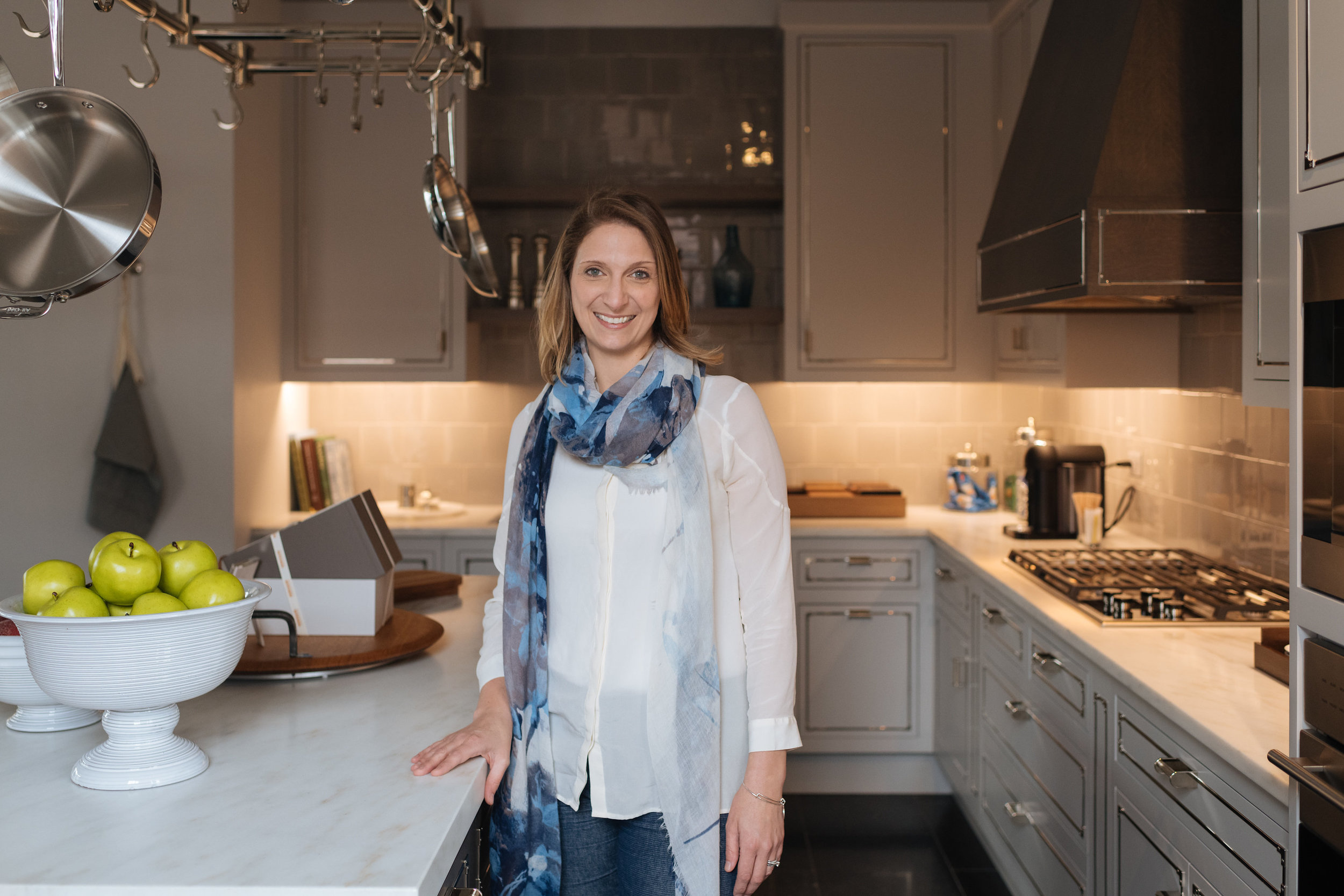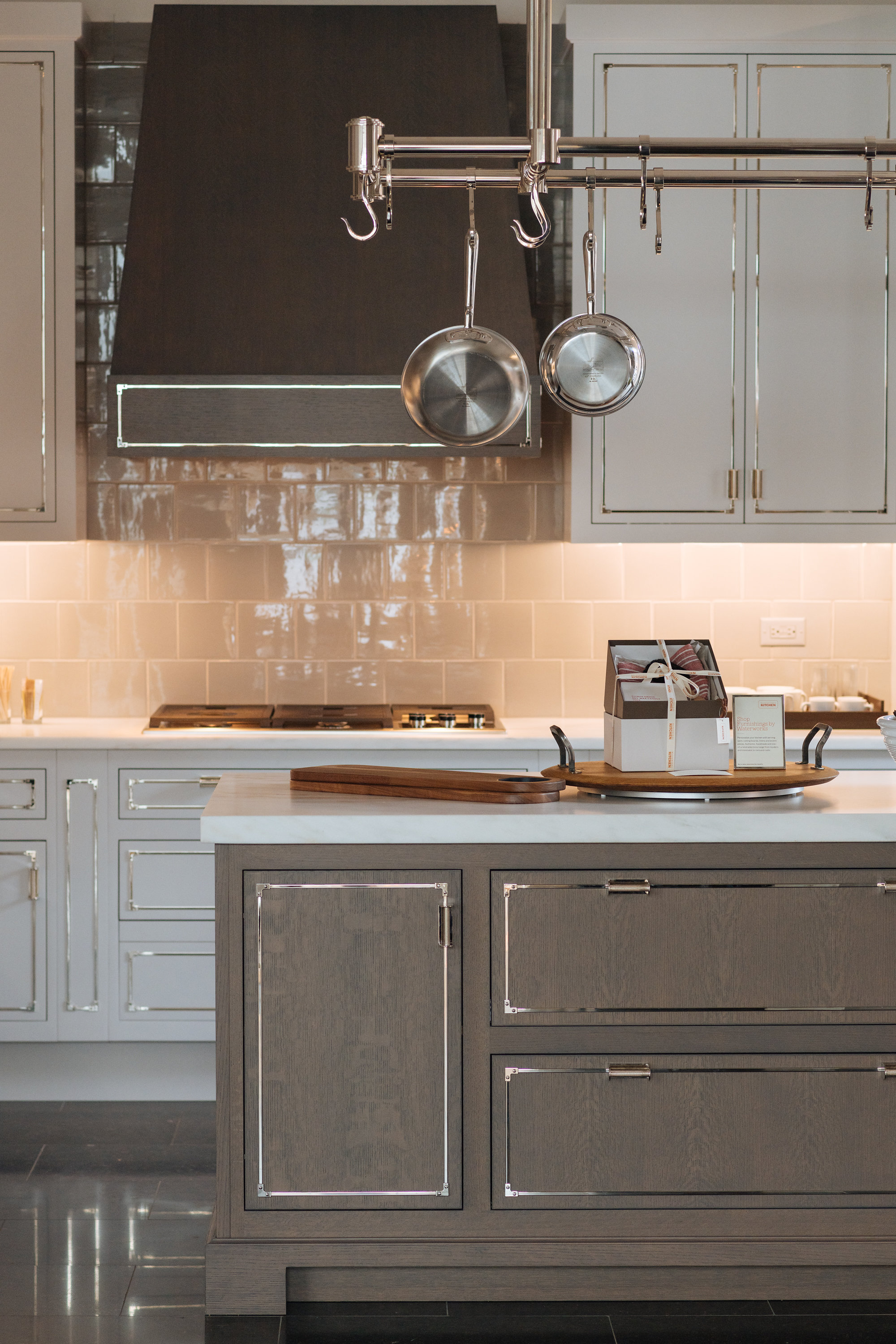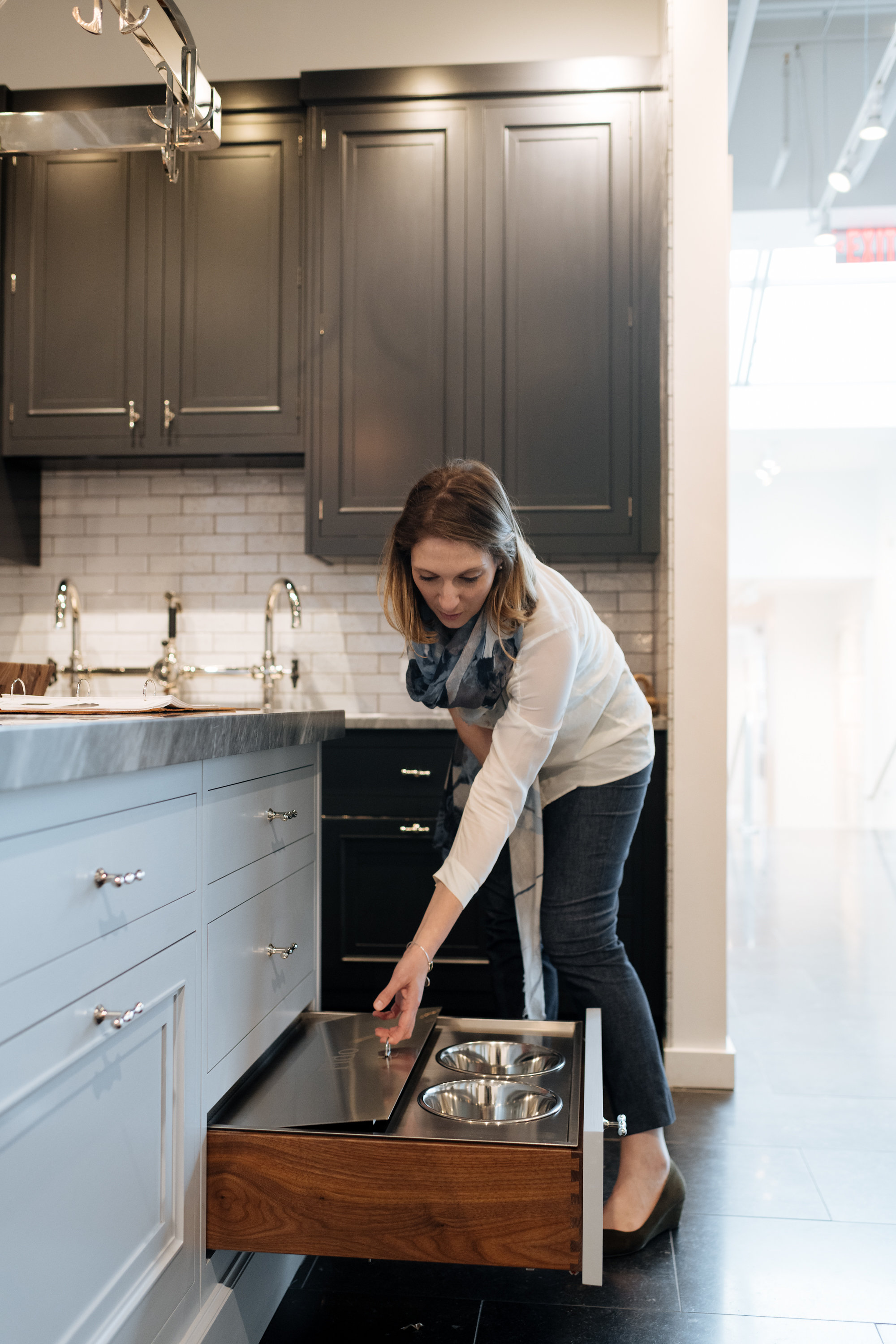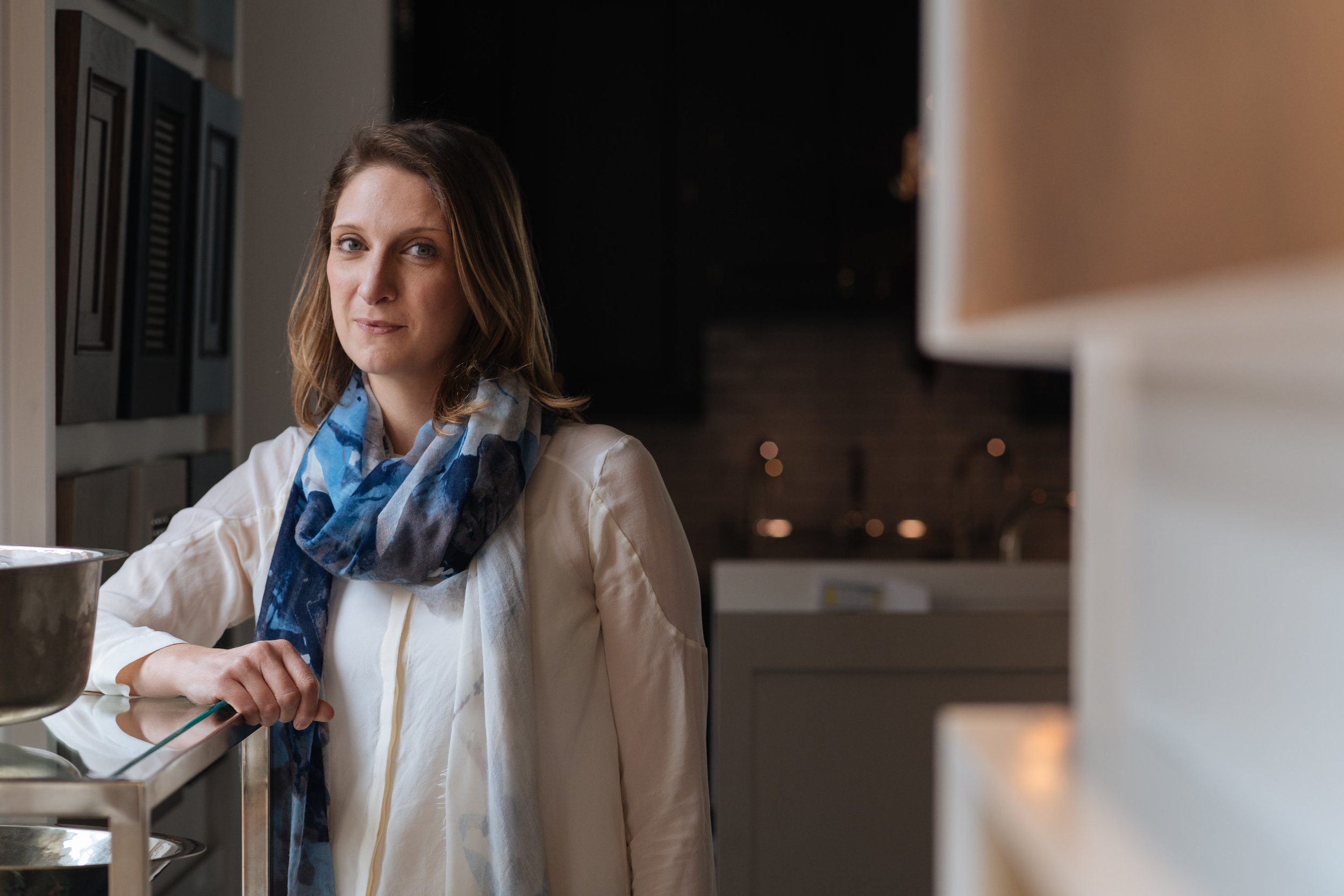‘I Like How the Kitchen Layout Impacts How You Live’
if home is where the heart is, and the way to the heart is through the kitchen, then the kitchen must be the nucleus of domestic bliss. emily eads has built an entire career on that notion.
The Waterworks cabinetry consultant fell into kitchen design by chance, but even as a little girl, she loved changing the layout of a room.
‘I remember I was constantly moving the furniture around in my bedroom and driving my Dad nuts, because he had to move the big stuff. I always liked how the layout would impact how you lived in a space.’
Emily declared her college major just as the DIY trend was exploding—thanks, largely, to TLC’s Trading Spaces. Suddenly, everyone was interested in interior design. An internship junior year pointed her toward the kitchen, where she’s remained ever since.
‘There’s a certain amount of fine detail involved in kitchen design and it’s more nitty gritty. I wasn’t always so detail-oriented, but it certainly makes you that way.’
A western Michigan native, Emily moved to DC in 2011 after her husband accepted a new position here. After several years at another showroom in Georgetown, Emily joined the Waterworks team nearly two years ago.
Emily’s clients are a mix of trade and consumer, and most in DC have the shared challenge of storage space.
‘I work with a lot of small spaces, and you have to really take inventory of what you have, what they have, and what they’re going to keep. There are all sorts of mechanisms out there—from corner cabinets, to storing step ladders in the four to six inches of space where the toe kick is, and going all the way to the ceiling with cabinets. I’ve heard, ‘I’m OK keeping a ladder in the kitchen because I have to have a place to put my lobster pot!’ You really get into their personal lives, but that’s the fun part.’
Additionally, Emily says more seating has become a must—whether to accommodate casual family dinners and breakfast with the kids, or a few friends over for a glass of wine. Forget about a formal dining room; the kitchen is the hub of the 2018 house.
Within that hub, rich, dense hues are informing current design trends. So, too, is metal work.
‘We just rolled out two new door styles that have metal work, so they lean a little industrial, but when you look at how fine the detail work is, there’s an elegance to it. It marries the two looks together, and you can mix and match. We still do a lot of white kitchens, but then there’s often a really fun, vibrant backsplash. People aren’t afraid of color anymore.’
Emily and her team manage not only the cabinetry design, but the entire installation process—including site visits to every client’s home. Although she’s worked throughout the DMV, Emily says a ‘teeny tiny’ kitchen in Georgetown has been her favorite, most rewarding project.
‘It was the most challenging to fit everything in that we needed to, and the client was lovely. She knew what she wanted, but it was a partnership. She has a teeny tiny little dog and wanted to integrate his crate into the kitchen and have beautiful mesh work on it. It was a strange thing that some people wouldn’t think of, but it turned out, and she was over the moon. If you want it, we’ll figure out a way to do it.’
It’s her own kitchen that Emily hasn’t quite figured out. She and her husband moved into the Loudoun County farmhouse two years ago, but haven’t touched the heart of the home.
‘It can be really difficult for a lot of designers when they’re doing their own home. I’ve seen so many options, and I’m open to so much that it may be a longer road to get to that final product. It’s hard to think about what I really, really want, because it seems to change a lot. I’ve spent all of my creative juices on everyone else’s kitchen.’
Not without a total sense of direction, Emily gravitates toward soothing, inviting kitchens that juxtapose the modern with the traditional—a trend she’s witnessed over the past decade with Georgetown clients who want their 1700s homes to morph into a clean and modern aesthetic on the other side of the door.
The inspiration behind each client’s vision has also become a mix of modern and traditional—sourced from Instagram, and Grandma’s kitchen.
‘A lot of people are nostalgic. They’ll say, ‘My grandmother had this type of cabinet, and the memory will come out. It’s fun getting to know them and what they’re all about. Sometimes their dream kitchen stems back to childhood. It’s what we know.’
The heart, and the home.






